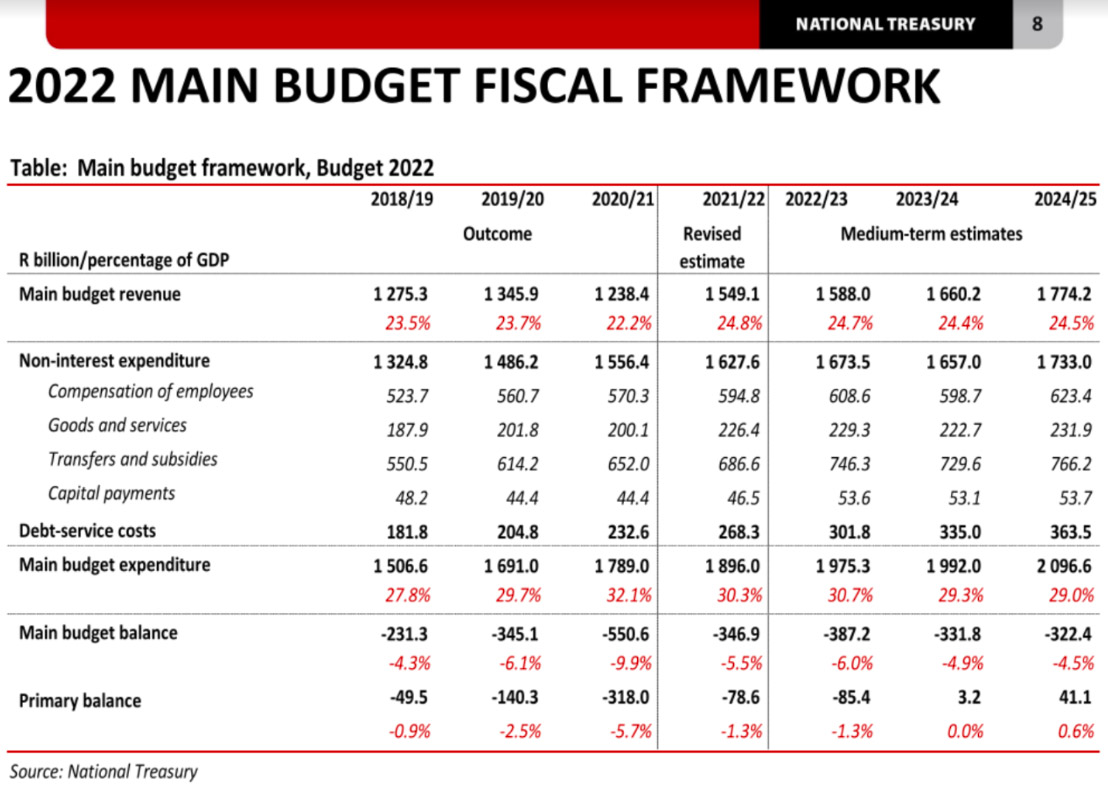On 2 June, Business Maverick (BM) reported that the government had “made a U-turn” in the public sector wage negotiations by tabling a “4.5% pay hike” across the board.
The news media reproduced the government’s version of what had been tabled. BM added that the bid was an important change in the employer’s position.
But it isn’t. There is no “U-turn”.
In the 2021 public service wage settlement, there is a Clause 3.3. It says that the non-pensionable “cash gratuity” of R1,220 to R1,695 before tax (higher for higher paid wage groups) “will remain in force until a new agreement is entered into by the parties”.
Referring to this clause, the employer counts its “4.5% offer” from the pensionable part of the actual salary, as if the additional cash payment isn’t a part of the wages actually paid.
When the wage bill increased by 4.3% in 2021/22 as a result of the 2021 settlement, the cash payment comprised about 2.5 percentage points of the increase. The rest was the result of adding a pensionable 1.5% wage increase to all.
Now, because of Clause 3.3, the 2022 wage negotiations therefore start from about minus 2.5%, on average.
The “on average” is crucial. The lower the pay grade, the more important the non-pensionable cash payment is for the final wage. For the lowest paid groups, the 2022 wage negotiations start from something like minus 7%-12% if talking with the employer, because the non-pensionable cash is set to fall away. How this should be handled is an open question.
If the cash payment is removed for good, it deducts 5%-10% (depending on the wage group and individual cases) from the wages of a majority of the 1,150,000 public service employees. If the unions would accept to add 4.5% after such a deduction, the majority would look at their payslips and see a wage cut in actual amounts compared to what they earn now.
And if the non-pensionable cash payment is kept as it is (adding zero to it), as indicated lately? Well, a wage increase by “4.5% across the board” would lead to something like a 1.8-2% increase of the actual wages before inflation, if the non-pensionable part is regarded as a part of the increase, when it is “put back again”.
By suggesting a de facto wage increase of about 2%, the employer is playing a card that fits very well within the 2022 main Budget fiscal framework from February. That is the politics of the latest offer.
In the present 2022/23 main Budget, the Compensation of Employees is set to increase from R594.8-billion in 2021/22 to R608.6-billion, ie, by R13.8-billion, or 2.3%. In this number, the huge contributions to the state pension funds are of course included. And that’s it.
From the position of suggesting a real wage cut of 4%-10% (only guessing within a span how much official CPI inflation will hollow out wages this year), the employer dreams of a settlement in June and of starting the 2023 negotiations in July, before the Medium-Term Budget Policy Statement in October.
Let’s look forward in the table: In 2023, an actual decline in the public sector wage bill is planned: from the R608.6-billion in this Budget year to R598.7-billion in 2023/24. This is a fall of 1.6%. Besides another real wage cut in the public sector, such a plan means another year of public service job culling in a sector where 165,000 posts were officially declared vacant in December.
All this inspired is by the “optimistic scenario” in the Country Partnership Framework signed with the World Bank in June 2021. In this clash scenario, the state Budget will reach a “primary budget surplus” in the next year, ie, thinking that the government’s incomes in the 2023 Budget will be higher than the expenditures, debt service costs not included.
It is a promise to “the market” from the finance minister that “must” be kept, come overcrowded classrooms and excess deaths at hospitals. It is a promise that the negotiators of the employer in the Public Service Co-ordinating Bargaining Council are expected to stick to.
The government has not abandoned its extreme austerity programme. Its negotiators are insisting on its implementation. DM/BM
Disclosure: The AIDC has assisted the public sector unions with reports before the negotiations.
















 Become an Insider
Become an Insider
The author comments “It (sticking to austerity) is a promise to “the market” from the finance minister that “must” be kept, come overcrowded classrooms and excess deaths at hospitals.” With or without public sector increases, we continue to have overcrowded and uneducated classrooms and excess deaths and long queues and backlogs at home affairs because the public sector unions have consistently refused to link any measure of productivity to increases. Yes, nurses deserve better salaries, if they actually nurse well. Yes, teachers deserve better salaries, if the actually teach. Based on whatever measures of productivity one cares to asses, too many public sector workers are already vastly overpaid for the little they contribute to the economy.